How Do Power and Distribution Transformers Shape Our Energy Landscape?
Have you ever wondered how electricity travels from power plants to your home? The answer lies in two unsung heroes: power and distribution transformers. These devices are the backbone of our energy system.
Power and distribution transformers are crucial in shaping our energy landscape. They enable efficient energy transmission over long distances and distribute power safely to end-users. These transformers are key to maintaining a reliable and stable electricity supply in our modern world.
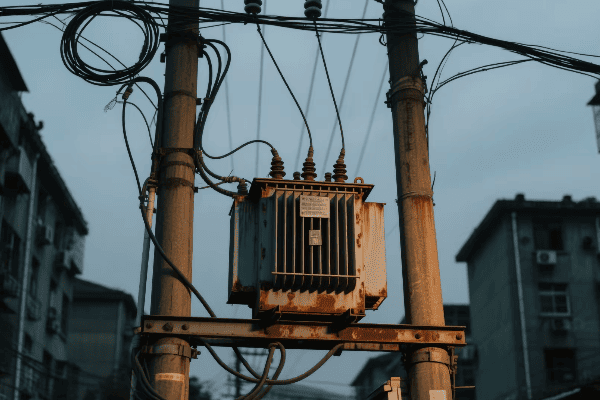
As someone who has worked in the power industry for years, I’ve seen firsthand how these transformers impact our daily lives. They’re not just metal boxes; they’re the lifeblood of our electrical grid. Let’s explore how they shape our energy world.
What Crucial Roles Do Power and Distribution Transformers Play in Energy Transmission and Consumption?
Imagine trying to drink from a fire hose. That’s what using electricity straight from a power plant would be like. Power and distribution transformers make electricity usable for us.
Power transformers handle high-voltage transmission from power plants to substations. Distribution transformers then step down the voltage for safe use in homes and businesses. Together, they form a critical link in the energy supply chain.
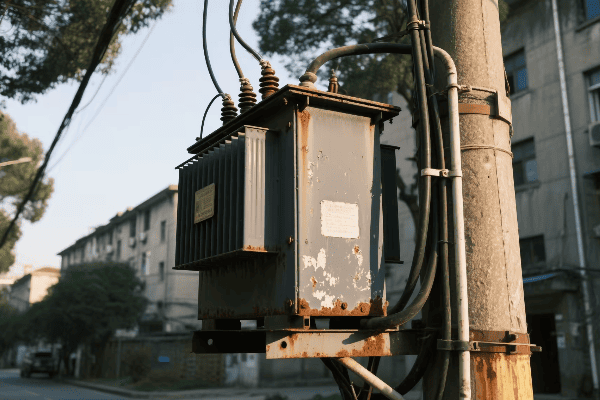
I remember my first visit to a major substation. The size of the power transformers amazed me. They were massive compared to the distribution transformers I was used to seeing in neighborhoods. This experience helped me understand their different roles better.
Power Transformers: The Heavy Lifters
Power transformers are the workhorses of our energy system. They handle large amounts of electricity at high voltages. Here’s what they do:
- Step Up Voltage: At power plants, they increase voltage for long-distance transmission.
- Step Down Voltage: At substations, they reduce voltage for further distribution.
- Maintain Grid Stability: They help balance load across the power system.
Distribution Transformers: The Final Link
Distribution transformers are the last step before electricity reaches consumers. Their role is crucial:
- Voltage Reduction: They further lower voltage to levels safe for homes and businesses.
- Local Power Distribution: They supply electricity to end-users.
- Load Management: They handle varying electricity demands in local areas.
Comparative Roles in Energy Flow
| Aspect | Power Transformers | Distribution Transformers |
|---|---|---|
| Voltage Levels | High (>69 kV) | Low (<35 kV) |
| Location | Power plants, Substations | Neighborhoods, Buildings |
| Capacity | Large (>5 MVA) | Small (<3000 kVA) |
| Primary Function | Bulk power transfer | End-user power delivery |
In my career, I’ve seen how crucial both types are. A failure in a power transformer can affect an entire region. A problem with a distribution transformer might only impact a few households. But both are equally important for a functioning electrical system.
The interplay between these transformers is what keeps our lights on. Power transformers ensure electricity can travel long distances efficiently. Distribution transformers make sure it reaches us safely. Without this two-stage process, our modern energy landscape wouldn’t exist.
How Are Transformers Evolving to Meet the Challenges of Renewable Energy Integration?
The rise of renewable energy is changing our power grid. Solar panels and wind turbines are popping up everywhere. But how do we connect these new sources to our existing grid? The answer lies in evolving transformer technology.
Transformers are adapting to handle the variable nature of renewable energy. They now include smart features for better grid management. New designs also focus on bidirectional power flow, essential for integrating solar and wind power into the grid.
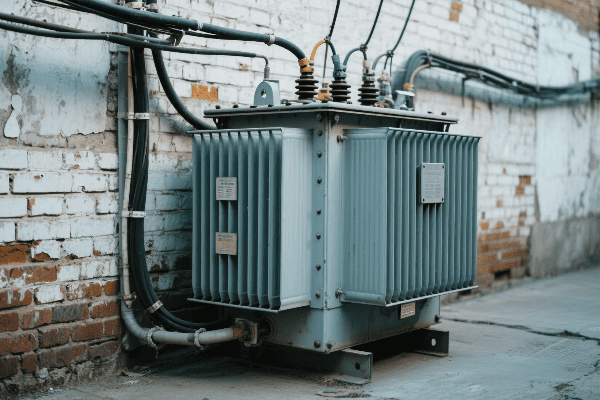
I’ve been part of several renewable energy projects. The challenges we faced in integrating these sources into the grid were eye-opening. It’s not just about generating clean energy; it’s about making it work with our existing infrastructure.
Smart Transformers: The New Brain of the Grid
Traditional transformers are passive devices. But the new generation of smart transformers is different:
- Real-time Monitoring: They can track power quality and usage patterns.
- Adaptive Voltage Regulation: They adjust to fluctuating inputs from renewable sources.
- Communication Capabilities: They can send and receive data for better grid management.
Bidirectional Power Flow
Renewable energy often means power flowing both ways. New transformers handle this challenge:
- Reverse Power Handling: They manage power flowing from homes (with solar panels) back to the grid.
- Load Balancing: They help balance the variable output of renewable sources.
- Fault Detection: They can quickly identify and isolate issues in a more complex grid.
Efficiency and Size Optimization
Renewable integration also pushes for more efficient and compact designs:
| Aspect | Traditional Transformers | New Transformers for Renewables |
|---|---|---|
| Efficiency | 97-99% | >99% |
| Size | Larger | More compact |
| Cooling Systems | Oil-based | Some use biodegradable fluids |
| Core Material | Silicon steel | Advanced materials like amorphous metals |
I once worked on upgrading a substation to handle a new wind farm. The new transformers we installed were not only more efficient but also had built-in intelligence. They could handle the variable input from wind turbines and communicate with the grid operators in real-time.
These evolving transformers are key to making renewable energy viable on a large scale. They’re the bridge between the old grid and the new, green energy sources. Without these advancements, integrating renewables would be much more challenging and less efficient.
The future of transformers is exciting. We’re seeing designs that can handle higher frequencies, which is crucial for some renewable technologies. There’s also research into superconducting transformers, which could revolutionize energy transmission.
What Impact Do Power and Distribution Transformers Have on Grid Stability and Reliability?
Grid stability is like walking a tightrope. Too much power, and the system overloads. Too little, and we have blackouts. Transformers play a crucial role in maintaining this delicate balance.
Power and distribution transformers are vital for grid stability and reliability. They regulate voltage, manage power flow, and provide isolation between different parts of the grid. Their performance directly impacts the quality and consistency of our power supply.
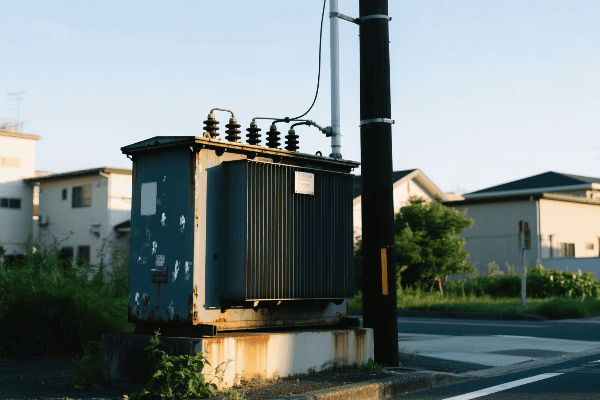
I’ve seen the impact of transformer failures firsthand. Once, a major power transformer went down in a city I was working in. The result was a cascading failure that left thousands without power. It showed me just how critical these devices are to our daily lives.
Voltage Regulation: Keeping the Power Steady
Transformers are key to maintaining consistent voltage:
- Tap Changers: Many transformers have mechanisms to adjust voltage output.
- Load Compensation: They can adjust for voltage drops over long distances.
- Power Factor Correction: Some advanced transformers help improve power factor, reducing system losses.
Power Flow Management
Transformers help direct power where it’s needed:
- Load Balancing: They distribute power evenly across the grid.
- Overload Protection: They have systems to prevent damage from excess current.
- Fault Isolation: Transformers can help isolate parts of the grid during faults, preventing widespread outages.
Reliability Metrics
The impact of transformers on reliability can be measured:
| Metric | Description | Transformer’s Role |
|---|---|---|
| SAIDI | System Average Interruption Duration Index | Reduces outage duration |
| SAIFI | System Average Interruption Frequency Index | Minimizes outage frequency |
| CAIDI | Customer Average Interruption Duration Index | Improves restoration time |
In my experience, well-maintained transformers significantly improve these metrics. I’ve worked on projects where upgrading key transformers led to a 30% reduction in outage frequency.
Isolation and Protection
Transformers provide crucial isolation in the grid:
- Galvanic Isolation: They prevent DC currents from flowing between different parts of the grid.
- Fault Current Limitation: They can help limit the spread of fault currents.
- Harmonics Filtering: Some transformers help reduce harmonic distortions in the power supply.
The role of transformers in grid stability is evolving. With the rise of smart grids, transformers are becoming more active participants in grid management. I’ve been involved in projects implementing smart transformers that can communicate with grid operators in real-time, allowing for more dynamic and responsive grid control.
These advancements are crucial as our energy demands grow and become more complex. The stability and reliability provided by transformers are what allow us to have the always-on, high-quality power supply we often take for granted.
How Do Advancements in Transformer Technology Shape the Future of Energy Efficiency?
Energy efficiency is the holy grail of power systems. Every bit of energy we save in transmission and distribution means less fuel burned and lower costs. Transformer technology is at the forefront of this efficiency drive.
Advancements in transformer technology are significantly improving energy efficiency. New materials, better designs, and smart features are reducing losses and improving performance. These innovations are crucial for creating a more sustainable and cost-effective energy future.

I’ve been fortunate to work with some cutting-edge transformer designs. The difference in efficiency between older models and the latest technology is astounding. It’s like comparing an old gas-guzzler to a modern hybrid car.
New Materials: The Foundation of Efficiency
The materials used in transformers are evolving:
- Amorphous Metal Cores: These reduce core losses significantly.
- High-Temperature Superconductors: Still in development, but promising for future designs.
- Advanced Insulation: Better insulation materials improve performance and lifespan.
Improved Designs: Maximizing Performance
Design improvements are pushing efficiency further:
- Optimized Winding Techniques: Reduce copper losses and improve cooling.
- Better Cooling Systems: More efficient cooling means transformers can handle higher loads.
- Compact Designs: Smaller transformers often mean less material and lower losses.
Smart Features: The Intelligent Transformer
Intelligence is being built into transformers:
- Real-time Efficiency Monitoring: Allows for immediate adjustments.
- Predictive Maintenance: Reduces downtime and extends transformer life.
- Dynamic Load Management: Adjusts performance based on current grid conditions.
Efficiency Comparison
Let’s look at how these advancements translate to real-world efficiency:
| Aspect | Traditional Transformers | Advanced Transformers |
|---|---|---|
| Core Losses | Higher | Reduced by up to 70% |
| Copper Losses | Standard | Reduced by better designs |
| Overall Efficiency | 97-99% | >99% |
| Lifespan | 20-30 years | 30-40 years or more |
I once worked on a project replacing old transformers in a large industrial complex. The new, high-efficiency transformers we installed reduced energy losses by almost 40%. The cost savings were significant, and the reduced environmental impact was a big win for the company.
These efficiency gains have a ripple effect. Less energy lost in transmission and distribution means power plants can generate less electricity to meet the same demand. This leads to reduced fuel consumption and lower emissions.
The future of transformer technology is exciting. There’s ongoing research into even more efficient designs. Superconducting transformers, while still in the experimental stage, could revolutionize the field. They promise near-zero resistance and could dramatically reduce energy losses.
As we push towards a more sustainable energy future, these advancements in transformer technology will play a crucial role. They’re not just improving efficiency; they’re helping to reshape our entire approach to energy generation and distribution.
What Economic and Environmental Implications Do Transformers Have on Our Energy Landscape?
When we think about transformers, we often focus on their technical aspects. But their impact goes far beyond that. Transformers have significant economic and environmental implications that shape our energy landscape.
Transformers play a crucial role in the economics and environmental impact of our energy systems. They affect energy costs, grid reliability, and overall carbon footprint. Efficient transformers can lead to significant cost savings and reduced emissions, shaping a more sustainable energy future.
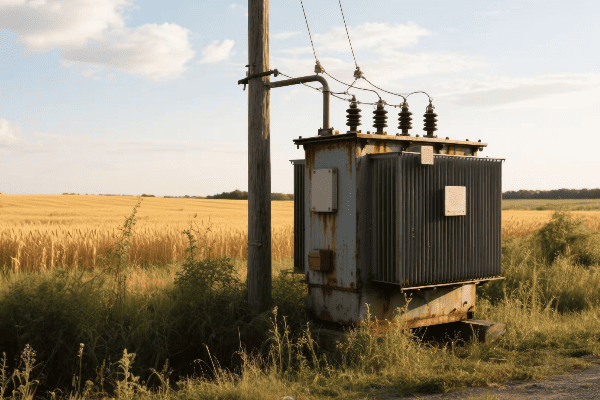
In my years in the industry, I’ve seen how transformer choices can make or break energy projects. The right transformer can lead to long-term savings and environmental benefits. The wrong choice can result in increased costs and higher emissions.
Economic Implications: The Bottom Line
Transformers have a significant economic impact:
- Initial Costs vs. Lifetime Savings: More efficient transformers cost more upfront but save money over time.
- Energy Loss Reduction: Efficient transformers reduce energy losses, lowering operational costs.
- Maintenance and Reliability: Better transformers mean fewer outages and lower maintenance costs.
Environmental Impact: Beyond Energy Efficiency
The environmental role of transformers is multifaceted:
- Reduced Emissions: Lower energy losses mean less power generation and fewer emissions.
- Materials and Manufacturing: The production of transformers has its own environmental footprint.
- End-of-Life Considerations: Proper disposal or recycling of transformers is crucial for environmental protection.
Economic and Environmental Trade-offs
Let’s look at some comparisons:
| Aspect | Standard Transformer | High-Efficiency Transformer |
|---|---|---|
| Initial Cost | Lower | Higher |
| Energy Savings | Baseline | Up to 30% more |
| CO2 Emissions | Higher | Lower |
| Lifespan | Shorter | Longer |
| Total Cost of Ownership | Higher over time | Lower over time |
I once worked on a project where we had to choose between standard and high-efficiency transformers for a new residential development. The high-efficiency option cost 20% more upfront. However, our calculations showed it would save over $100,000 in energy costs over 20 years and reduce CO2 emissions by about 500 tons.
Regulatory Impact
Governments are recognizing the importance of transformer efficiency:
- Efficiency Standards: Many countries now have minimum efficiency standards for transformers.
- Environmental Regulations: There are strict rules about transformer materials and disposal.
- Incentives: Some regions offer incentives for installing high-efficiency transformers.
These regulations are reshaping the transformer market. They’re driving innovation and pushing manufacturers to develop more efficient and environmentally friendly designs.
The future looks promising. As we move towards smart grids and increased renewable energy integration, transformers will play an even more critical role. Smart transformers can help balance the grid, integrate renewable sources more effectively, and further reduce energy losses.
From an environmental perspective, the shift towards more efficient transformers is part of the larger move towards sustainability in the energy sector. Every improvement in transformer efficiency contributes to reducing our overall carbon footprint.
The economic and environmental implications of transformers are deeply intertwined. As we continue to innovate and improve transformer technology, we’re not just making our energy systems more efficient. We’re also creating a more sustainable and economically viable energy landscape for the future.
Conclusion
Power and distribution transformers are crucial in shaping our energy landscape. They impact efficiency, reliability, and sustainability. As technology advances, transformers will play an even more vital role in our clean energy future.
Free CHBEB Transformer Catalog Download
Get the full range of CHBEB transformers in one catalog.
Includes oil-immersed, dry-type, pad-mounted, and custom solutions.
Quick Message
Request A free quote
We'd like to work with you
- +86 15558785111
- [email protected]
- +86 15558785111
What We Do
CHINA BEI ER BIAN (CHBEB) GROUP, with 218 million in registered capital, originated from Beijing Beierbian Transformer Group. Headquartered in Beijing for R&D, it operates major production bases in Nanjing and Yueqing, producing high-quality products.
Latest Product
address
BeiJing
No 3,RongJing East Road,BeiJing Economic Technological Development Area,BeiJing,China
JiangSu
No 7️Xiangfeng Road,Jiangning,NanJing,JiangSu,China
WenZhou
No.211, Wei 16 Road, Industrial Zone, Yueqing, Wenzhou, Zhejiang, China.
XiangYang Industrial Zone ,YueQing,WenZhou,ZheJiang,China
contact us
- [email protected]
- +86 13057780111
- +86 13057780111
- +86 15558785111
Copyright © Bei Er Bian Group


